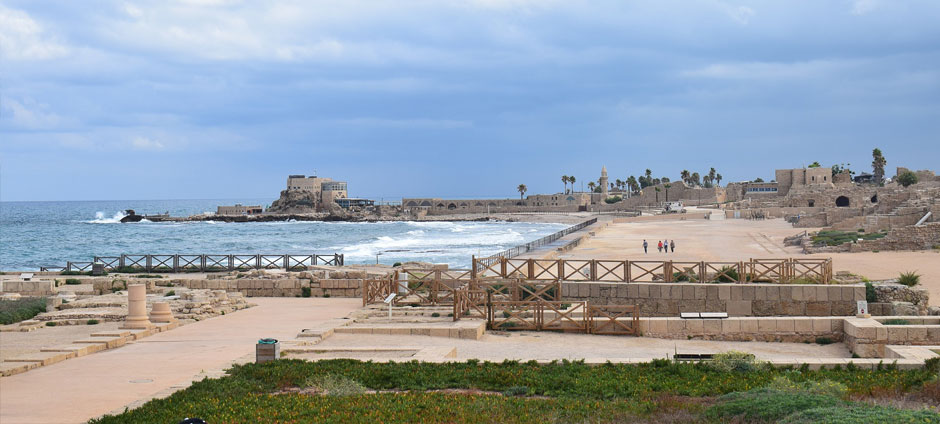
Caesarea was built as part of Herod the Great’s ambitious plan to “Hellenise” the Holy Land in the 1st century BCE. He chose the site of a small Phoenician port called Stratton’s Tower and laid out a classical Greek city, complete with amphitheatre and stadium. Herod also constructed an artificial harbor by making use of concrete piling under water – the first ever such use of concrete.
Caesarea is well-known as an archaeological site preserving the original theater built by Herod, replica of the Pontius Pilot inscription, Byzantine Archive Buildings, Cardo Maximus as well as bath-houses, ware houses, an amphitheatre and the harbor. During Roman rule Caesarea was the capital of Israel. It was here where Cornelius, the Roman centurion, was converted by Peter; Paul was imprisoned before being taken to Rome; and where the leaders of the Bar Kochba revolt were tried and executed, including Akiva.


